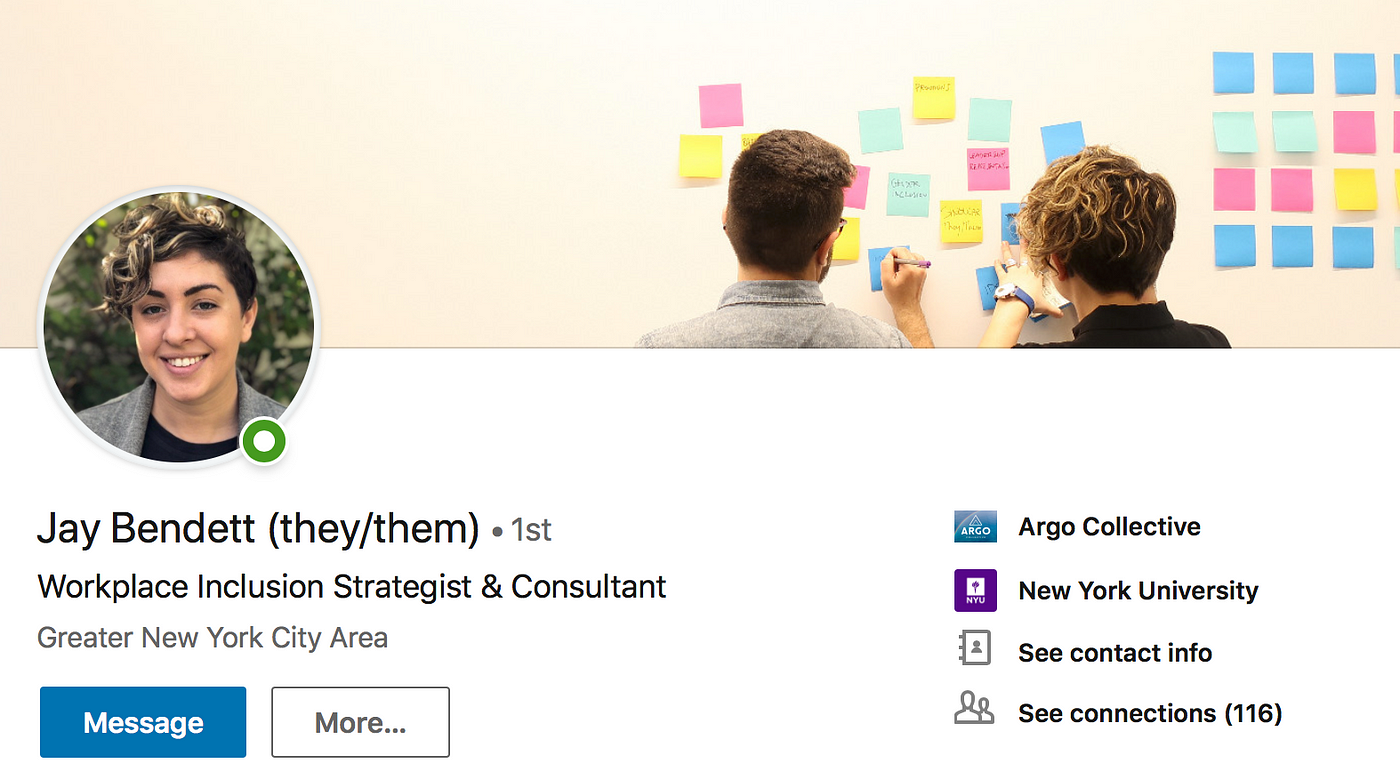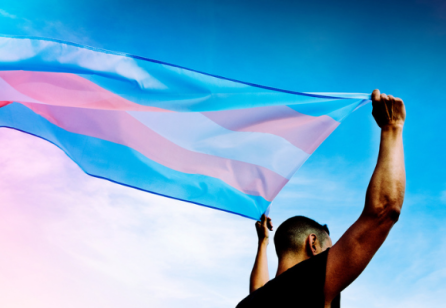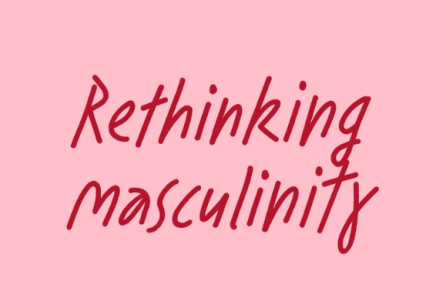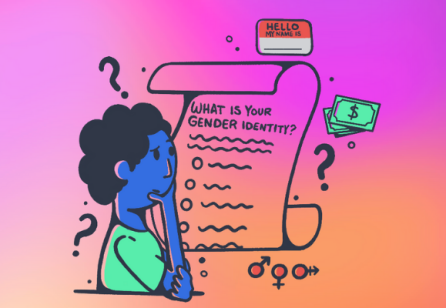
For a person who is transgender or nonbinary, sharing pronouns can be a bit riskier. If someone is transitioning at work and only a few people know about it, sharing pronouns may out them before they’re ready. For a nonbinary person, sharing they/them pronouns often only sparks a lengthier conversation (*coughthisarticlecough*) rather than simply inform people.
That’s why we ask cisgender people to lead the change by sharing pronouns. It normalizes the process, has little risk, and actually makes for a safer environment for everyone.
Small action, big impact
At Argo Collective, we always have our workshop attendees make a commitment before the close of each session. One of our clients committed to adding his pronouns on his LinkedIn profile. Two days after he added “He/Him” after his last name, a University reached out to him and said they noticed he and some of his colleagues added pronouns on LinkedIn. The University told him they had a transgender student who was looking for an internship placement and this company seemed like a safe environment for the student to begin their career.
That’s why pronouns matter. It might be the beginning of a huge career for this student, who might have had trouble to find his first job as a transgender person.
Becoming an LGBTQ ally
Our friend Craig Forman (Sr. People Scientist at Culture Amp) explains what he learned about the value of sharing pronouns as a cisgender person:
How to add your pronouns on Linkedin
It can be tricky to add your pronouns on Linkedin because for now, Linkedin doesn’t support a specific field for pronouns. (We know this is a problem, and we talked with LinkedIn to encourage them to add a specific pronoun field.) In the meantime, You can add “They-Them, She-Her, or He-Him (or whatever other pronouns you use!) after your last name.

**Sidenote: when editing your LinkedIn profile on your computer, you can’t use the character “/” (annoying, we know). However, you can use “/” when editing your last name on the Linkedin app. Life-hacks for the win! The important thing is showing pronouns however possible.
Be an ally through email, too
Try adding your pronouns to your email signature! It’s another easy way to not only inform people you communicate with of your pronouns but normalizes this process for everyone.

Feel free to copy-paste our own signature template and replace the pronouns by yours. At the bottom, we add a link to this page so more people can learn about why pronouns matter and why they should also add theirs:
Max Masure (they/them)
Argo Collective | Co-Founder | COO
Gender Inclusion Strategist
Linkedin | Twitter | argocollective.co | Chat with me!Why I put my pronouns on my email signature and you should too
Be vocal
Normalizing the usage of pronouns is a concrete, impactful way to show your advocacy for LGBTQIA+ individuals. It takes some practice to transform the unfamiliar into the familiar. At first, it might be awkward to share pronouns when you meet someone, but after a while, you probably won’t even hear it.
So, however you identify, be proud of your pronouns and encourage others to as well! It helps more people than you think.

Co-author: Jay Bendett








Share your thoughts
0 RepliesPlease login to comment